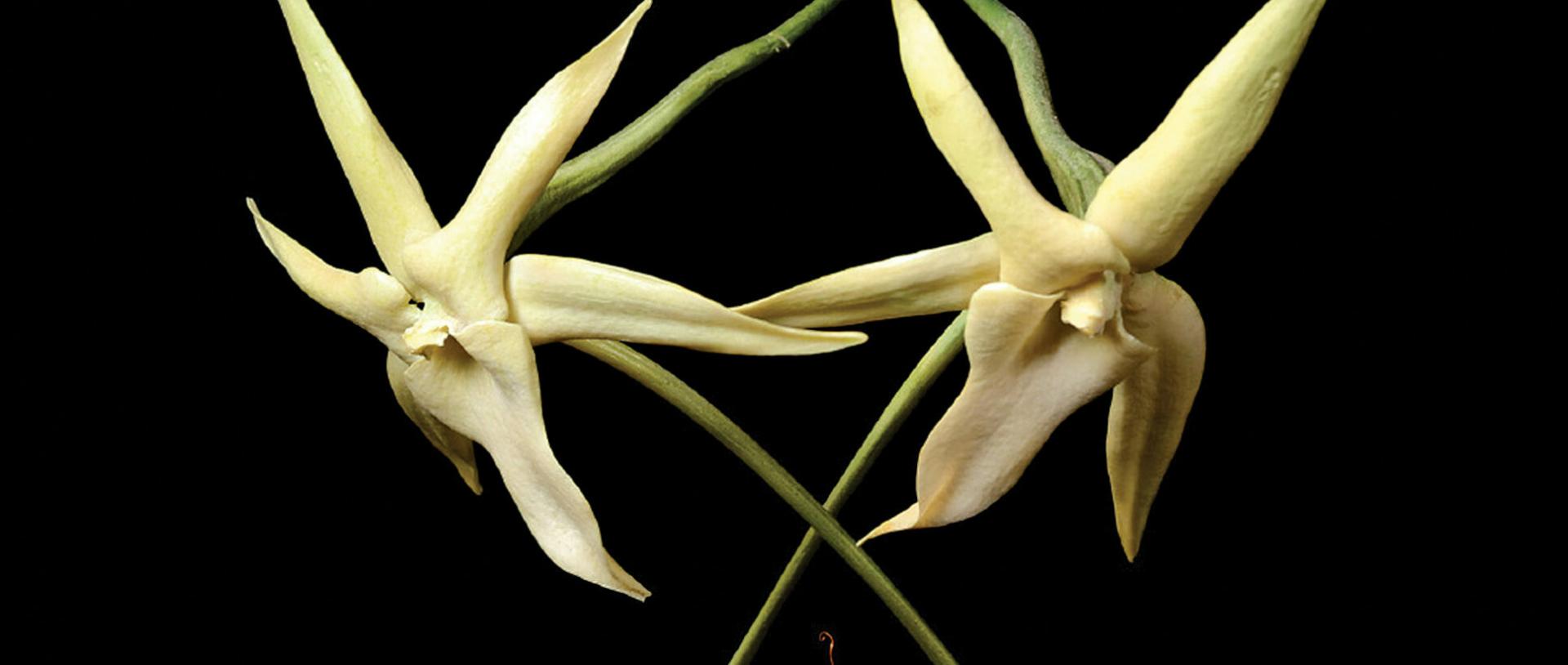Arnoldia, 78(5) -
It was a warm and humid night in September of 2003. In a tropical forest by the coast of Madagascar, Phil Devries, an entomologist and noted nature videographer, swatted mosquitoes hovering around his face. He had been waiting eagerly for a visitor since seven o’clock. As the night transitioned to early morning, without any signs of the visitor, the tension and anxiety in Phil’s mind increased. For the visitor, Phil Devries was inconsequential; the desired object was Darwin’s orchid near which Phil (or the Butterfly Man, as he is popularly known) had parked himself to photograph the orchid’s pollinator.
“Good Heavens what insect can suck it,” Charles Darwin is said to have remarked in reference to the nectar in the long floral tube of Angraecum sesquipedale, now known as the Darwin’s orchid, native of Madagascar. Darwin had received the orchid on January 25, 1862, from James Bateman, a businessman, collector of plants, and horticulturist, who grew orchids. Darwin then famously predicted that A. sesquipedale must be pollinated by a hawkmoth with a proboscis that measured at least eleven inches in length... Read More




